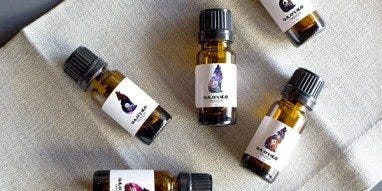Glass: Recycling and Conservation
Glass and Recycling
For centuries, glass has served as a universal packaging container, holding precious commodities like wine and olive oil. Today, manufacturers use glass to hold everything from soda to perfume. The glass in many items, from your soda bottle to your computer, can be recycled over and over while retaining its strength.
Just the Facts
- Americans generated 11.5 million tons of glass in the municipal solid waste (MSW) stream in 2010.
- About 27 percent of the glass was recovered for recycling.
- Glass recycling increased from 750,000 tons in 1980 to more than three million tons in 2010.
- Food, soft drink, beer, food, wine, and liquor containers represent the largest source of glass generated and recycled.
- Glass in durable goods, such as furniture, appliances, and especially consumer electronics, round out the sources of post consumer glass.
Recycling Glass
Glass, especially glass food and beverage containers, can be recycled over and over again. In fact, 90 percent of recycled glass is used to make new containers. Recycled glass can also be used in kitchen tiles, countertops, and wall insulation. Glass recycling has grown considerably in recent years through increased collection through curbside recycling programs and glass manufacturers' increased demand for recycled glass.
Most glass manufacturers rely on a steady supply of recycled crushed glass, known as "cullet," to supplement raw materials. To make glass, manufacturers mix sand, soda ash, limestone, and cullet; heat the mixture to a temperature of 2,600 to 2,800 degrees F; and mold it into the desired shape.
Using cullet saves money and helps the environment, because:
- Cullet costs less than raw materials.
- Cullet prolongs furnace life and saves energy since it melts at a lower temperature.
- Less energy used means reduced emissions of nitrogen oxide and carbon dioxide, both greenhouse gases.
Glass collected at the curbside is usually commingled, meaning that different colors and types of glass are collected together. This glass might then be sorted by color, or other characteristics, at a materials recovery facility. Some municipal and commercial recycling programs require participants to separate clear, brown, and green glass. Although all glass is made of silica and soda, the type and quantity vary slightly with different types of glass. Different melting points and chemical incompatibility make it important to sort glass by color. Glass separated by color yield glass cullet of higher economic value.
Markets for Recovered Glass
Glass container manufacturers need a steady supply of quality cullet to make glass containers. Ninety percent of recycled glass is used to make new containers, and the demand for quality cullet is greater than the supply. High-quality cullet is free of contaminants that would limit its usefulness in manufacturing.
High-quality cullet can be used for abrasives, aggregate substitute, bead manufacturing, decorative applications, fiberglass, frictionators (match tips), and fluxes in metal foundry work. Lower-quality cullet is increasingly used in secondary applications, such as in the manufacture of fiberglass insulation, roadbed aggregate, driving safety reflective beads, and decorative tile.
Source Reduction
Source reduction is the process of reducing the amount or toxicity of waste that is generated. Money and resources saved by reducing the volume of glass containers help make glass more cost-effective for glass container manufacturers, who face competition from aluminum and plastic container manufacturers. Using advances in design and manufacturing technology, the glass container industry continues to reduce the weight of glass containers.
External Resources
- The Glass Container Recycling Loop
- How to Recycle Glass
- Recycling Myths
- Glass Recycling Resources
- Glass Recycling, Sustainability, and the Environment
- The Benefits of Glass Recycling
- The Glass Recycling Process
- Recycling Guides for your Home
- More Recycling Myths Busted
- How Glass is Recycled









